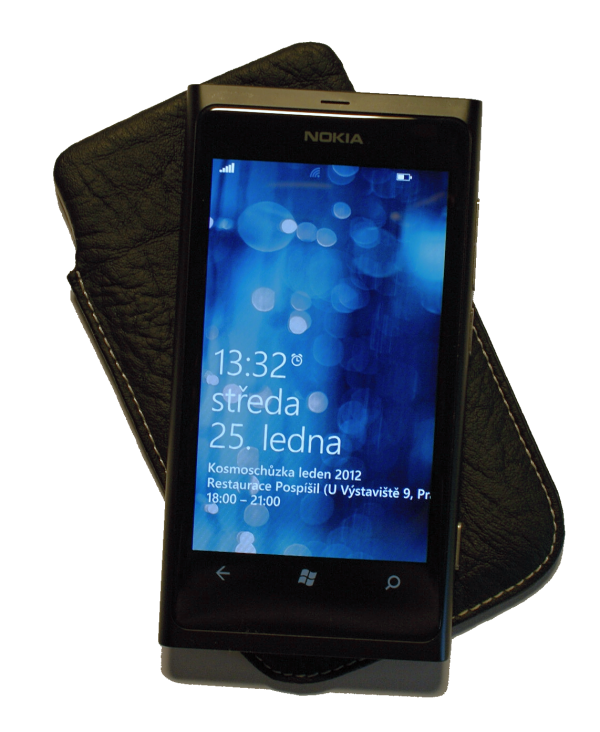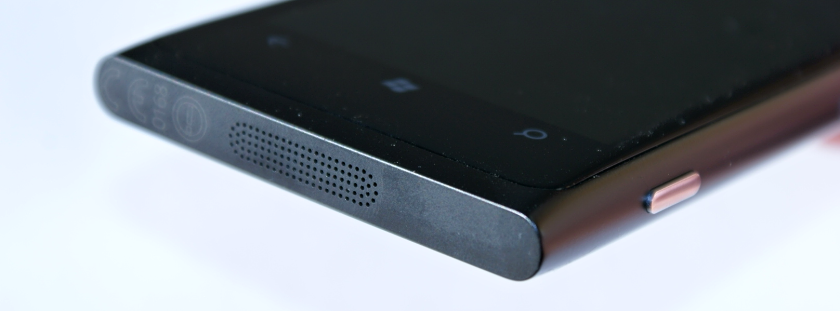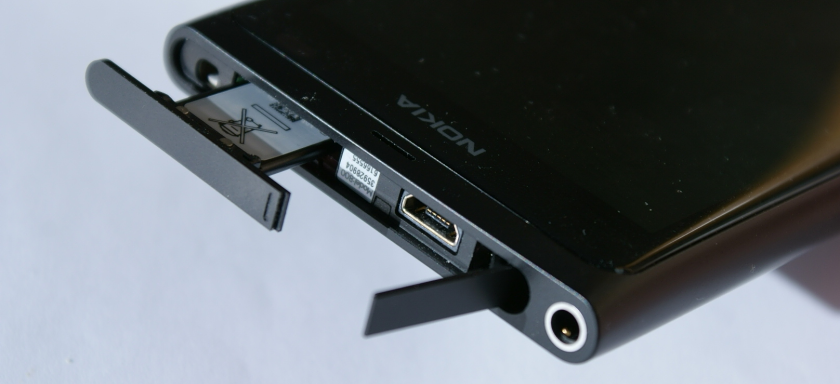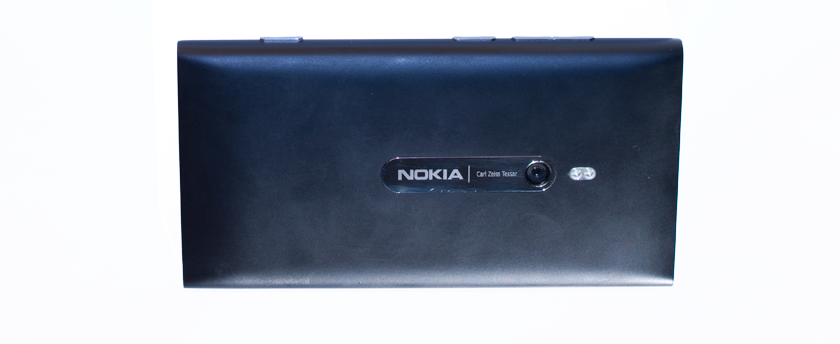The package does not include a case, so it’s a good idea to get one, mainly to protect the display. Although a rubber case is available, it does not protect the two most sensitive parts of the phone – the lens and the display. It is intended more as additional protection against damage to the phone when dropped on a hard surface.

The biggest enemy of all phones is dust. You can't think of a simple protection against it. The Lumia 800 has the necessary minimum inputs – a speaker, microphone, mini USB, SIM and headphone jack. The speaker will not be easy to clean. The slit is quite narrow, so it will only be possible to do it carefully with a needle. The circular holes to the microphone tend to clog with dust that sticks to the grease on the walls. It’s nothing major, but again, it is necessary to remove dirt with a needle once in a while. The headphone jack seems to be in a separate partition, so dust can't penetrate through it further into the inside of the phone.

At the bottom edge there is a microphone and a second speaker. I welcomed two speakers in my previous Nokia 6230i phone. A speaker that is not used for calls is stronger. For example, it is possible to watch Týden Live even without headphones, unless you are in a very noisy environment, such as high school or metro. The episode I watched was about 40 minutes long and my phone was streaming it over Wi-Fi. The battery has dropped from 100% charge to 95% during that time.

One piece of polycarbonate is a very handy solution that is very elegant and guarantees the overall rigidity of the structure. Nothing squeaks, nothing bends, nothing can come off because it has nothing to do. There is a hole with a diameter of 0.8 mm under the two LEDs, probably for production reasons. It doesn't look dangerous, it’s just close to the camera lens. The polycarbonate does not adhere directly to the tempered glass of the display, but there is a gap of 0.3 mm wide. Due to the presence of glass, careful cleaning with a needle is not an option, but rather with a corner of the paper. The buttons are precise, the gap between them and the polycarbonate is no more than 0.2 mm, but typically 0.1 mm. So they don't have much will and don't spill.

The display is safely hidden and sealed, and no dust should ever get to it. It’s a much better solution than in the case of the Nokia 6230i, which had a replaceable case, but its construction creaked and dust appeared behind the display cover immediately. In addition, the one was covered with just plastic. If plastic had better optical properties than glass, camera lenses would be plastic – which they are not. Grease on the display after it is lit is not visible at all thanks to the polarizing filter.

The upper edge is very ingeniously designed. The USB connector cover has one degree of freedom – rotation around a metal axis mounted in polycarbonate. The snap is magnetically designed, so there is nothing to wear off. Shortly after I got acquainted with this construction, I was horrified at what idiot could have come up with something like that. However, after quite intensive use, when I was uploading a new build of my app every now and then, I found out that the plastic used is quite flexible and could last for a few years. I would rather welcome a titanium one. It is necessary to think about this and handle the canopy carefully. It’s a pity that the power supply is not designed similarly to MacBooks. The SIM chip is inserted into a drawer like an HDD in a PC case (unless you have the cheapest one). The contact conductors leave scratches on the mating surfaces, which goes without saying. However, it is not a design suitable for frequent SIM chip replacement. Systems where the chip is just placed on the connectors are better for frequent replacement. Thanks to the universal jack connector, regular headphones can also be connected to the phone (tested on Air Canada headphones).

The camera has a fixed focus. I haven't figured out yet how to focus manually, or if it’s even possible. The focus mode has a special mode for macro, which is translated as zoom mode. However, the target audience is not DSLR users, so it can be tolerated. When you press the shutter button, the focus is signaled acoustically, which is great. The exposure metering mode (again, only the metering mode is mentioned, so you don't know if it’s metering exposure, white balance, or something else) has three modes – center balance, frame diameter, and center point. I always have to think for a few minutes before I realize what the UI designer actually meant (the question is whether he even knew what it was about). The lowest ISO value is 100. The flicker reduction function at 50 Hz and 60 Hz is very useful, so you can take great photos with LCDs. The LED lighting can be set to automatic, turned off, or forced. If you shoot in RAW on your DSLR, then keep in mind that this only shoots in JPEG. It is therefore necessary to set the parameters of the software image processing before the shutter is triggered. The lack of light due to the small lens and the inability to use a tripod cannot be solved in any other way than by increasing the ISO. The photos look like that. On the other hand, if you display the photos on a 3.7-inch display, that’s more than enough and there’s nothing to worry about.
The battery life is very decent for a smartphone. With data transfers turned off over the mobile network, it lasts over 2 days. It’s hard to say where the battery capacity of 1.45 Ah will drop per year. However, the firmware does a lot and some updates are still in the pipeline. Nokia has a good reputation in this area. After two years, I had to charge my old Nokia 6230i every other day. After purchase, it was enough to charge it once every two weeks. I already thought I would have to buy a new battery. But when I was dealing with the fact that the new 512MB SSD card doesn't work instead of the standard 32MB, I was told that I needed a new firmware. After uploading it, I recharged it once every two weeks. After seven years of use, it dropped to one week. Whether the Nokia Lumia 800 will last after seven years of charging 24 hours of normal use remains to be seen.
